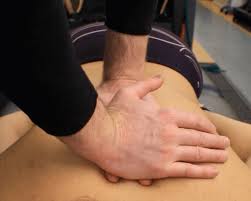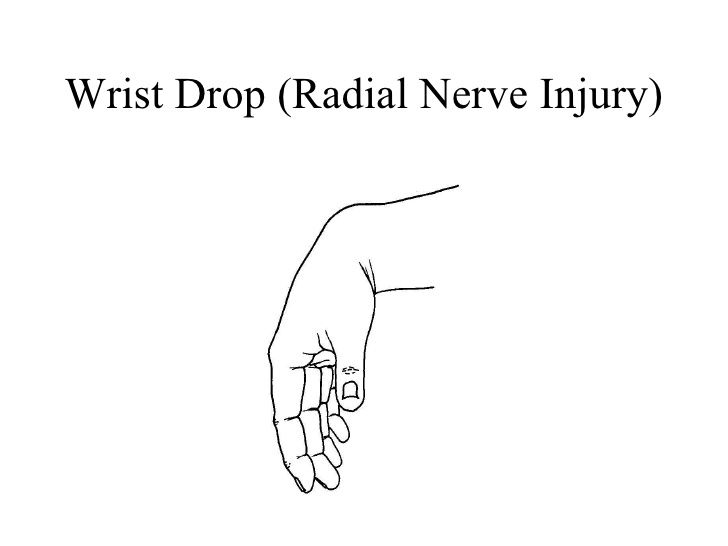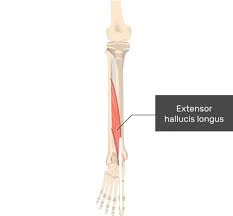Infraspinatus muscle strengthening exercise
Table of Contents
What is the Infraspinatus strengthening exercise?
- Infraspinatus strengthening exercise is the best way to strengthen the shoulder, as well as the scapular region & improve overall fitness and performance in day-to-day activity.
- The infraspinatus muscle is helpful to perform external rotation, or even rotating the shoulder away from the body, this is needed when you are washing the hair or putting on a seat belt. The infraspinatus muscle started at the back of the shoulder blade on one end and the back of the upper arm bone on the other. This helps to rotate the arm to the side while keeping the shoulder joint stable. Doing
- Strengthening Exercising of infraspinatus regularly may help the muscle function effectively & may prevent certain shoulder injuries.
The main action of the infraspinatus muscle is assisting in the external rotation of the shoulder joint, scaption, & lateral rotation of the humerus.
Health benefits of Infraspinatus strengthening exercise
- This increases the range of motion(ROM) & internal rotation in the shoulders.
- Provides stability in the shoulder joint.
- Increase reach blood circulation around the shoulder joint.
- Boost athletic presentation Gives flexibility as well as mobility to the shoulder joint.
- This also stabilizes & moves the scapulae.
There have different exercises to strengthen the infraspinatus muscle
Pendulum
- How to do this strengthening exercise: To do this exercise a patient has to stand next to something they can lean on: a table, a barre bar, the back of the chair, a barbell rack, etc.
- Now Lean on the supporting object & flexed forward slightly so the right arm hangs freely in front of you.
- The knees should be flexed as well as the back straight. Resist the urge to round or use the back in any way.
- Using only the shoulder muscles, start swinging the arm gently forward as well backward. Swing for 8-10 seconds.
- Next, move the arms side to side, again for another 8-10 seconds.
- Finally, swing the arm in a circular movement for another 8-10 seconds.
- Repeat with the left arm.

Sleeper Stretch
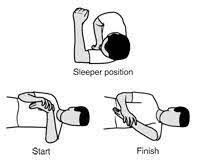
- How to do this strengthening exercise: This is another variation that is a very useful warm-up exercise recommended by the physical therapist. One that will work both the infraspinatus & teres minor muscles. This exercise has not required any equipment & may be done multiple times throughout the day as PT for the injured rotator cuff, or simply to strengthen the infraspinatus muscles.
- To do this exercise a patient has to Lie on the left side, either on the floor or on a firm bed. Put the pillow beneath the head to maintain a neutral spine & shoulder alignment.
- Put the shoulder & elbow firmly on a bed or floor in front of you. Flexed the arm at a ninety-degree angle.
- Use the right hand to start pushing the left hand down toward the bed/ground. Make sure you did not press on the wrist instead, all the pressure should become to the upper forearm.
- Push the arm down until the patient feels the tension in the back of the shoulder.
- Maintain this stretched position for 30-40 seconds, then relax for 30 seconds.
- Repeat 3 more times on the left side, then shift onto the right side & repeat.
Passive External Rotation
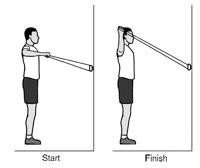
- How to do this strengthening exercise: For one last per-workout warm-up, try this simple but highly effective rotating stretch. The patient can do it 3-4 times a day, every day of the week, and this will go a long way toward strengthening the infraspinatus as well as teres minor muscles.
- To do this exercise the patient will need a stick at least 4 feet long. Hold the stick firmly in the left hand, & cup the right hand over the other end.
- Flexed the arms to a ninety-degree angle in front of you. Keep the shoulders relaxed, head up, & back straight.
- With the left hand, push the stick against the right hand to rotate the right arm outward.
- Push until you feel mild to moderate tension. Stop before the patient feels any pain.
- Once he finds the left spot, hold the pose for 30 to 40 seconds, then relax for 40 seconds.
- Repeat 3 more times, then switch to the right arm.
Side-Lying Wiper
- How to do this strengthening exercise: This is an easy exercise the patient can perform with fairly light weights. All you need is a firm surface to lie down on, such as a carpeted ground or on the Yoga mat, and a dumbbell, and you are ready to go.
- To do this exercise Lie on the left side, with the knees flexed slightly and the hand/arm supporting the head.
- Hold a light dumbbell in your left hand. Put the elbow firmly against the left side.
- Without removing the elbow from the side & moving only the forearm as well as shoulder muscles, rotate the arm to bring the weight upward until it is directly above the right side.
- Lower slowly to the floor, rest for a one-count, & repeat.
- Do a set of 10-20 repetitions, then switch over to the right side & left arm.
- Perform 2 to 3 sets per side, without resting between each set.
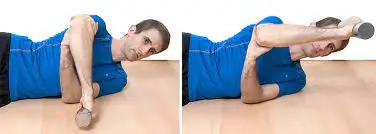
Prone Horizontal Abduction with External Rotation
- How to do this strengthening exercise: To perform this exercise the patient will need to lie face-down on an elevated surface, such as a bed or a table. Dangle the left arm off the edge of the elevated surface, gripping a dumbbell in the left hand.
- Move the shoulder blades down & back, as well as twist the wrist so the thumb points outward side, away from the body.
- Keep the arms perfectly straight, and do a horizontal lift, raising the thumb toward the roof.
- Elevate the arm until it is parallel with the body, hold for a half-count, then slowly lower back down to the embarking position.
- Repeat for 10-20 repetitions, rest for 30 seconds, & continue until you have completed 3 sets.
- Switch to your left hand and repeat for 3 sets of 10-15 repetitions on each side.
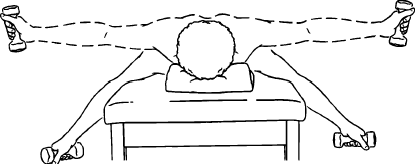
Standing External Cable Rotation
- How to do this strengthening exercise: To perform this exercise the patient has to Stand sideways and to the left of the cable machine, gripping the cable machine handle with the left hand.
- Set the handle to the height of the upper abdomen so the arm is at a ninety-degree angle.
- The elbow should be close by the side, the back straight, the shoulders relaxed, & head up.
- Without moving the elbow or upper arm, rotate the shoulder to bring the cable across the body & as far outward as you can manage.
- Control the movement as you return to the original position, & pause for a 2-count before performing the next repetition.
- Repeat for 10-15 repetitions using very little weight.
- The patient should feel the slight burn, but not be straining so hard you are tempted to “cheat” to complete the set.
- Do 4 sets on each arm.

Prone External Rotation
- How to do this strengthening exercise: Lie on the tummy with the left upper arm hanging halfway off the side of a bed or bench at shoulder level.
- Holding a one to two-pound weight in the right hand, rotate the forearm as well as the hand upward until the forearm is parallel with the floor.
- Hold this position for two seconds, then return to the starting position.
- After completing 10 repetitions, perform the same exercise with the other arm.
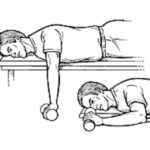
Resisted External Rotation
- How to do this strengthening exercise: To perform this exercise a patient has to stand with the right side facing the door.
- With one end of a resistance band secured in the door handle, hold the other end in the left hand. Keep the left elbow flexed at a ninety-degree angle & resting firmly against the side.
- Rotate the left forearm away from the door as much as you can without turning the torso. As you perform this, squeeze the shoulder blade down as well as the back. Do not let the elbow leave the side.
- After a one to two-second hold, release the shoulder blade as you rotate the forearm back to the starting position.
- Do 10 repetitions before switching to the right side.

Prone Elevation
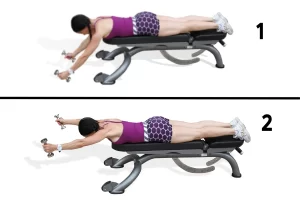
- How to do this strengthening exercise: To do this exercise the patient has to Lie on the tummy with the left arm hanging off the edge of a bed. Hold a one to two-pound weight in the left hand.
- With the left thumb facing up, elevate the arm slightly above ear level until it is even with a bed.
- Do not shrug the shoulder or lift the shoulder off the bed as you perform.
- Hold the left arm in this position for 1 to 2 seconds and & then lower it back down.
- After completing this ten times, repeat with the right arm.
Side-Lying External Rotation
- How to do this strengthening exercise: To perform this exercise the patient has to Lie on the right side with the left elbow flexed at a ninety-degree angle & the palm resting against the abdomen. Hold a one to two-pound weight in the left hand.
- Set the left shoulder blade down & back.
- Then, rotate the left palm as well as the forearm away from the tummy until the forearm is straight up & down.
- Maintain this position for one to two seconds & then slowly rotate the arm back to the tummy.
- After ten repetitions, repeat with the right arm.
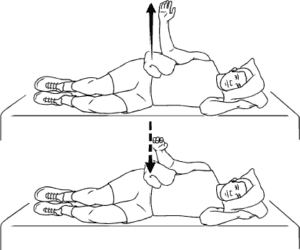
Full Can
- How to do this strengthening exercise: To perform this exercise the patient has to stand on one end of a resistance band & hold the other end in the left hand.
- They can also use one to two-pound hand weight in place of a resistance band.
- With a straight elbow & the thumb positioned up, elevate the arm at a 45-degree angle with the body.
- Once the patient has lifted the arm slightly above ear level, hold this position for one to two seconds & then slowly lower back to the right side. Do not shrug the shoulder as you perform.
- After ten repetitions, repeat the exercise on the left side.
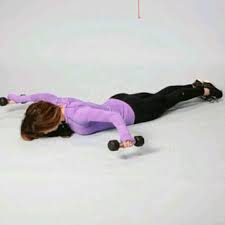
T-Band Rows
- How to do this strengthening exercise:
- Wrap the band around a pole or any steady object at belly button height.
- Hold on to both ends of the band so that there is an equal length on both sides, while also keeping tension in the band at the starting position.
- Start with the elbows extended with an upright torso (maintained throughout), & then pull the elbows straight back, keeping them tucked in.
- Pinch the shoulders while pulling the band back.
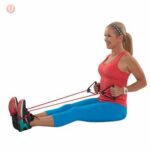
Incline Reverse Lateral Dumbbell Raise
- How to do strengthening exercises:
- To do this exercise the patient has to Lie face-down on an inclined bench.
- Grab the dumbbell in both hands below the chest with the arms fully extended.
- Raise the arms to shoulder height, arcing the weights away from each other to come back to the initial position.
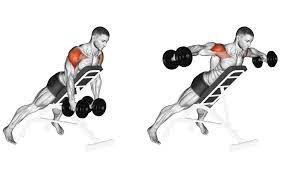
When did the patient not do the Infraspinatus strengthening exercise?
- If the doctor advised you to take rest.
- If the patient feels any pain or discomfort while this exercise then stops immediately & consult the physical therapist.
- If the arm bone is recently fractured.
- If the muscle is recently injured.
FAQ
This exercise strengthens the infraspinatus. Stand with the arms hanging down by the sides. Hold a light dumbbell in each hand. Raise the arms to the sides, with the thumbs pointing up & elbows straight, until the arms are parallel to the ground.
Infraspinatus tendon tears frequently happen in overhead athletes, as a result of overuse injury, or in chronic shoulder instability. The main complaints are pain during sleeping, weakness in the affected arm, & inability to move the arm in certain motions.
Pinched nerve
If the suprascapular nerve in the shoulder gets pinched, this can cause infraspinatus pain. A pinched nerve is usually due to trauma, overuse injuries, or as a result of other shoulder dysfunction.
The best way to treat this muscle is by placing the hand of the painful shoulder onto the opposite shoulder, in the front. So if you have pain in the right shoulder, then place the right hand on the left shoulder, with the right elbow in front of the chest, and the right elbow bent.
If the joint is not well stabilized, this may also lead to loss of range of motion & arthritic changes in the shoulder joint down the road. There are 4 rotator cuff muscles: supraspinatus, infraspinatus, subscapularis as well as teres minor. The supraspinatus tendon is the most commonly torn part of the rotator cuff.

